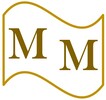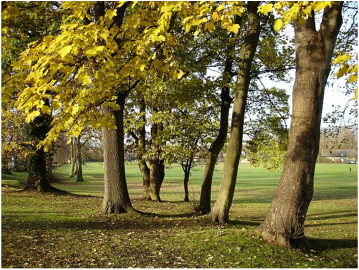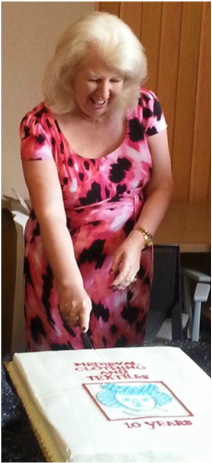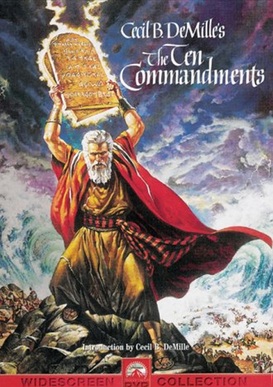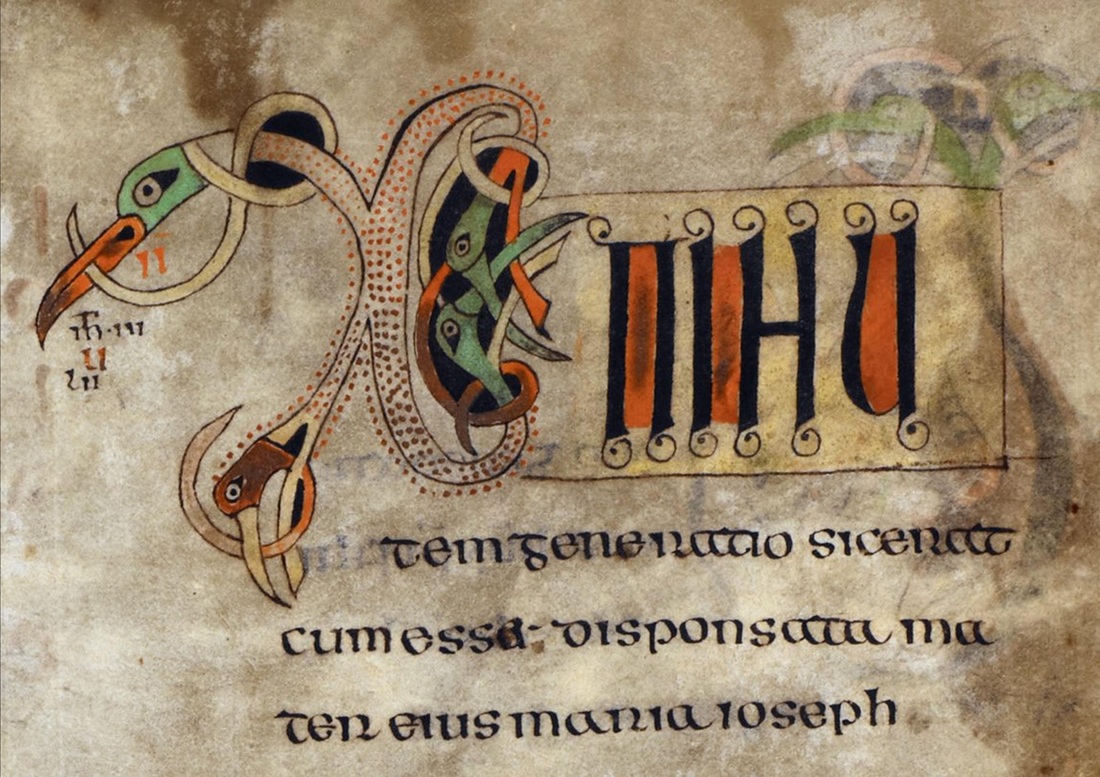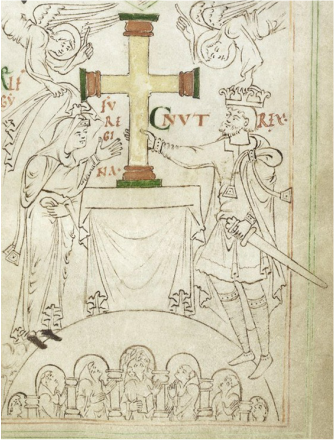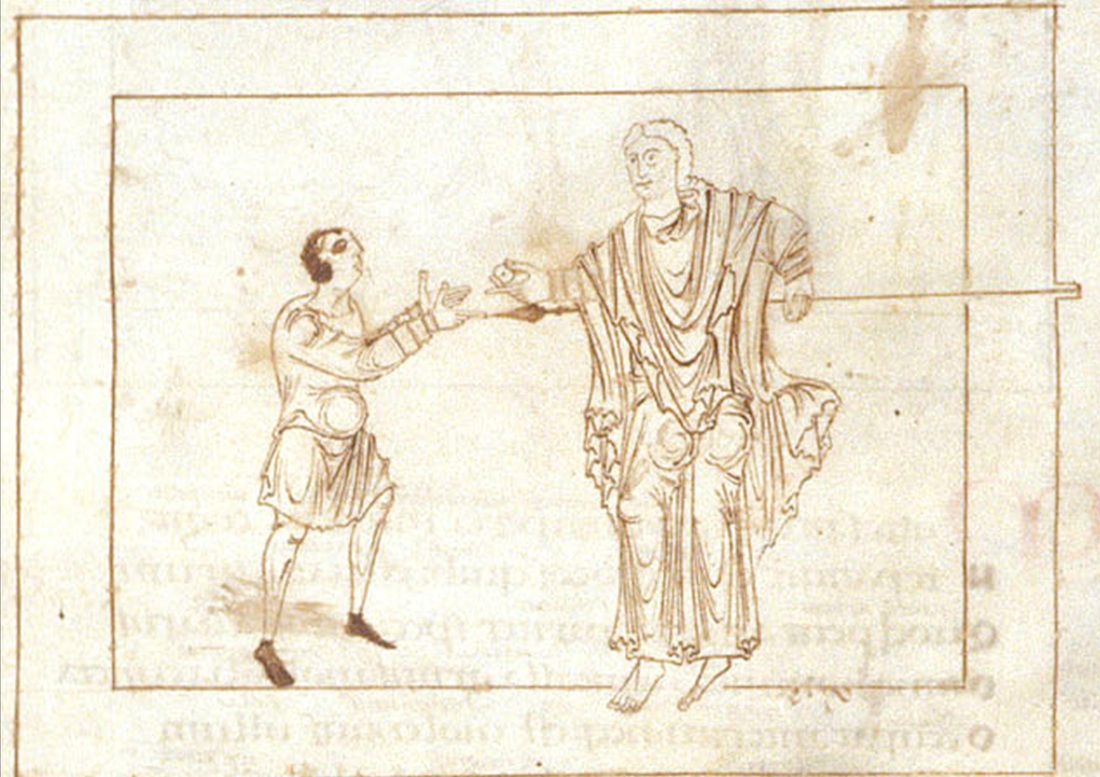The Trial of Penenden Heath: It conjures up images of King William honouring the native laws of his newly conquered land, wheeling out (quite literally) the frail Bishop Æthelric, learned in the laws and customs of the English, to espouse the old ways. The Anglo-Saxon Monk asks if we should go along with this drama ... 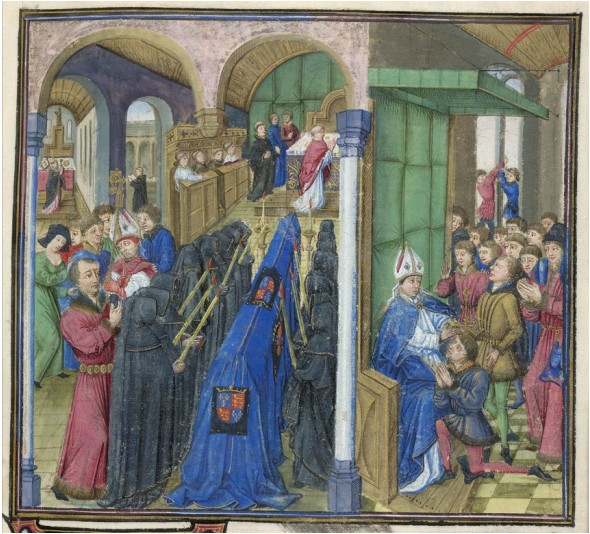 Grande Chronique de Normandie, British Library (Brussels, c. 1460-1468). Left, William the Conqueror's funeral; right, Archbishop Lanfranc crowning William Rufus. The Rochester version of the Trial of Penenden Heath, between Lanfranc and Bishop Odo of Bayeux, was recorded some time after William the Conqueror's death in 1089. This image is PUBLIC DOMAIN. Please click on it to go to the source.
2 Comments
I had the pleasure, this past Thursday evening, of attending Professor Gale Owen-Crocker’s retirement celebration. What a wonderful scholar! In the field of Anglo-Saxon studies she stands as one of the greats. She has pioneered the study of Anglo-Saxon dress, has used her weighty interdisciplinary skills to open up new ways of reading our most famous poem Beowulf, and has compelled us to look ever closer at the Bayeux Tapestry.
It’s certainly not difficult to enumerate her academic achievements, though you would need to utilise a medieval monk’s mnemonic techniques in order to recall her huge list of publications! What we don’t always get to hear, though, about someone who has been as successful as Gale, are the personal accounts of kindness, humility and sense of fun. King Alfred. We all know he was Great. Resilient, doughty warrior and subduer of Vikings. Champion of education, lawmaker and military reformer. Not so good at baking, mind you. Let’s just say that he wouldn’t have got his cakes past that devil in disguise Mary Berry and her blue-eyed tormentor Paul Hollywood.*
*Non-UK readers: Mary and Paul are the feared judges on one of the UK’s most popular TV shows, The Great British Bake-Off. Now I mentioned just now that Alfred was a lawmaker. Yes, indeed. He wrote the largest piece of early medieval legislation in Old English. Well, he probably got some lowly scribe to work the quill. Someone like me. Part of the reason that his law-code was rather long was because he wrote a preface to it, in which he actually translated several chapters from Exodus, the second book of the Bible. Now, all you blessed theologians out there will know that Exodus incorporates the law attributed to Moses (big white beard and ten plagues of Egypt fame), which includes, at its heart, the Ten Commandments, written initially by the finger of God on a couple of stone tablets (handily knocked up by God, too, I imagine), and subsequently transcribed by more human means onto a human-prepared medium, this following Moses’ smashing of the tablets in a moment of righteous indignation (see DVD image above). By now I’m sure you’ve anticipated me and you realise that King Alfred actually translated The Ten Commandments in his lawcode. Well, actually, he didn’t. Alfred produced The Nine Commandments. Moreover, not content to omit one of God's own big laws, he also took his legislative pruning shears to a couple of the others. Kingly privilege, my blessed readers, kingly privilege. Now as you read his version through, below, and compare it to the version that appears in the Bible, I wonder if you wouldn’t mind thinking about possible reasons Alfred may have had for engaging in – what shall I call it? – a moment of shrewd editing.
Welcome to Mercia, the English Midlands. Or, more precisely, welcome to the laws of Mercia, from which you will discover the answer to the question posed in the title of this week’s morsel of monkish mayhem. (I know I should have used ‘wisdom’, or even ‘penetration’ there, but neither alliterated.)
Patricia Bracewell's second novel about Queen Emma of Normandy is out February 5th ... and the Anglo-Saxon Monk is delighted.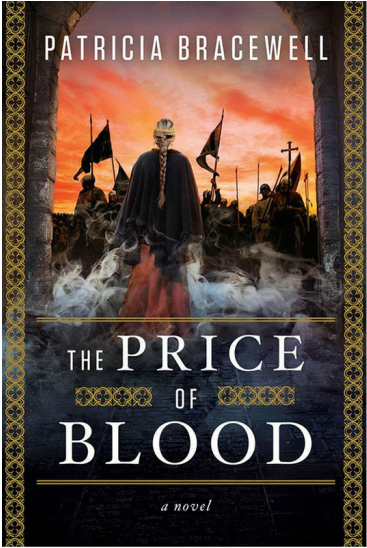 You may remember, blessed readers, that last year I interviewed Patricia Bracewell about the first book in her Queen Emma trilogy, Shadow on the Crown. It was a riveting read – brought me through a cold of Anglo-Saxon epic proportions, in fact. No mean feat. Her great story-telling brought life to a figure for whom there is only sparse historical documentation, and, I would say, also challenged the way we imagine the history of women of the late Anglo-Saxon period. Well, beloved, I'm glad to say that Patricia sent me an advance copy of The Price of Blood (monkish privileges, you know), and, as with the first novel, it in no way disappointed. Fabulous read, in fact. I'm hoping very much that she gets her quill busy on the vellum so that I can read the final instalment. The book is out from tomorrow (February 5th) in hardback and paperback in the USA, and also in various electronic formats. (Lord knows what Kindle, MP3 Audio and i-Book mean! Whatever next?) Readers from Mercia, Wessex, Northumberland and the Danelaw, wishing to avail themselves of the more solid form, and via their local merchants, will have to wait until summer. Alas. |
Details
|
